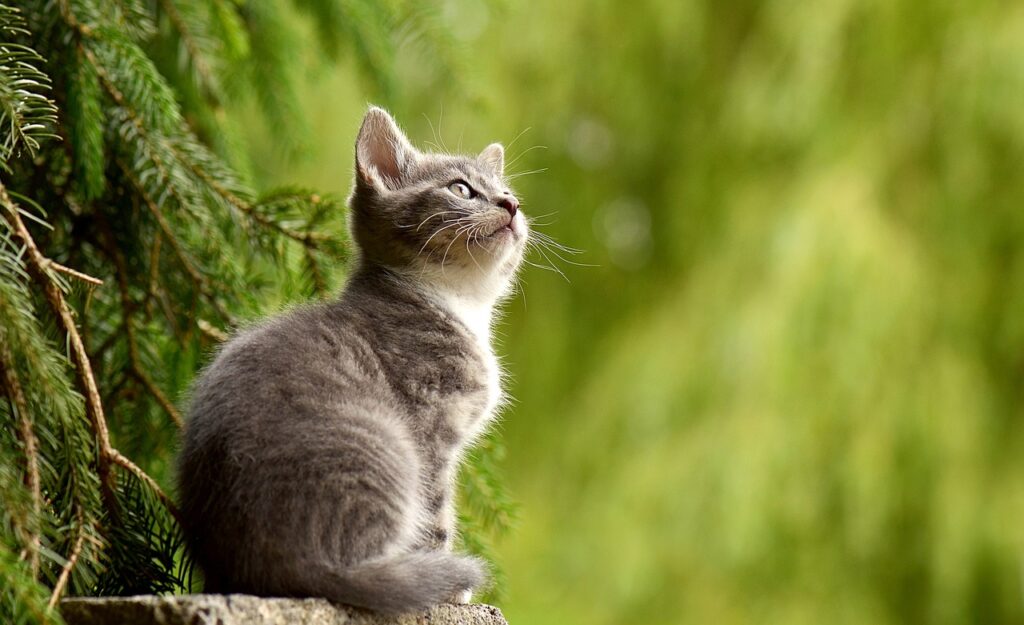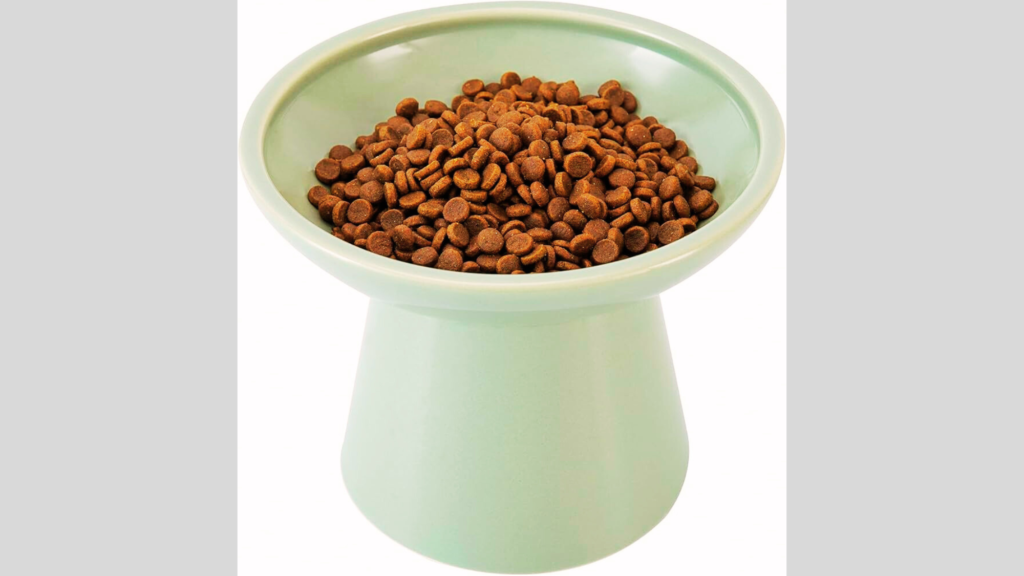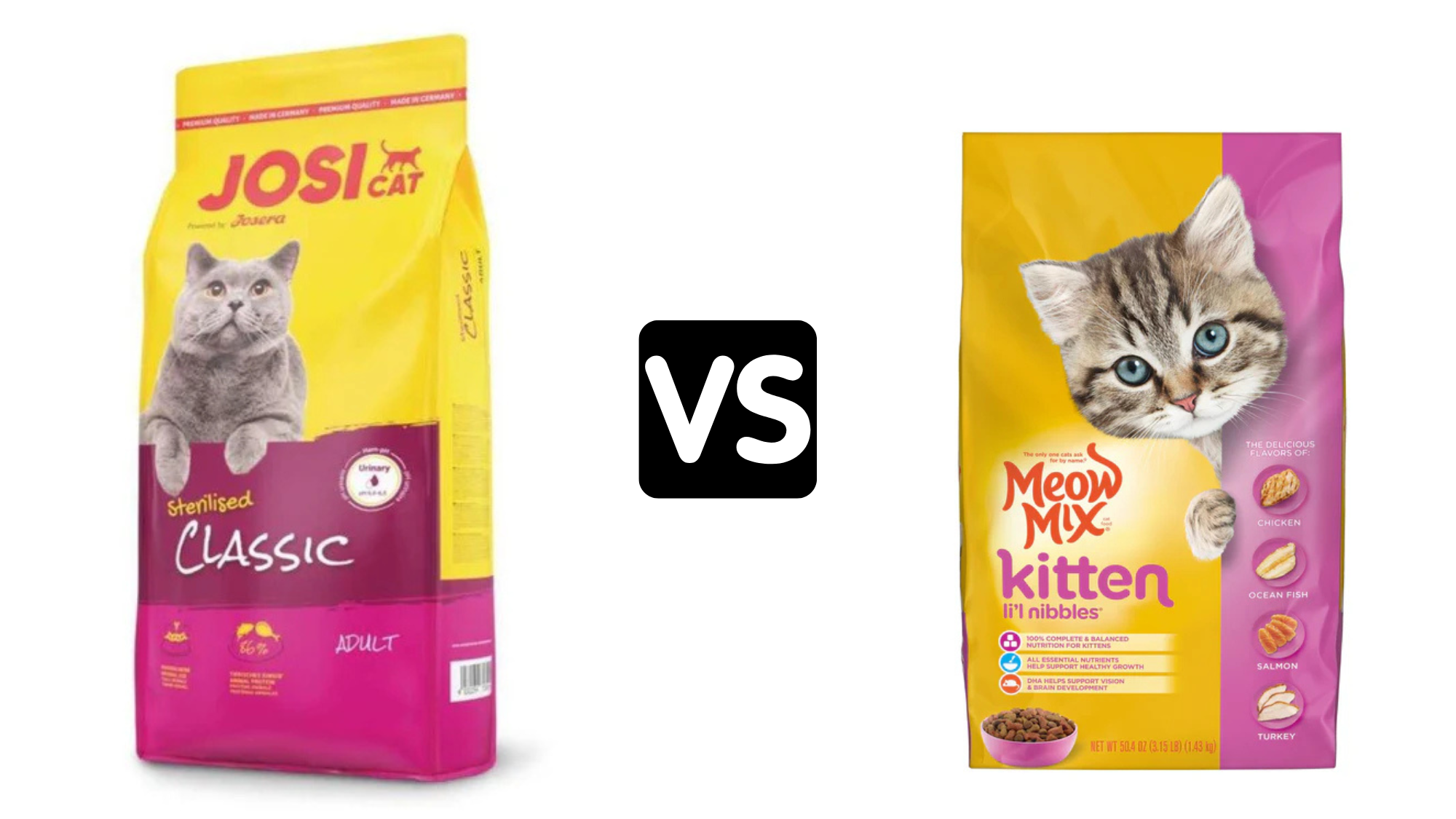| Summary: All-life-stages cat food meets the nutritional needs of both kittens and adult cats, but kitten food is specifically formulated with extra protein, fat, and essential nutrients for rapid growth. While all-life-stages food is convenient for multi-cat households, kittens may still benefit more from dedicated kitten food during early development. |
All life stages cat food vs kitten food: Feeding your feline friend at the right stage of life is essential for lifelong health. Kitten food is uniquely formulated with higher protein, fats, and key nutrients like DHA and taurine to support rapid growth, while cat food for adult and senior cats shifts focus toward balanced maintenance, joint care, and overall well-being. Training your dog requires the right gear! Here’s a comprehensive list of must-have dog training equipment to help with obedience and behavior.
I will help you understand the differences, provide easy-to-follow feeding schedules, and offer practical tips for transitioning your cat through every stage of life—from playful kittenhood to graceful senior years.
For insights on whether Pomeranians should wear a collar, including considerations for safety and alternatives, check out this informative article.
Blog Highlights
ToggleAll Life Stages Cat Food vs Kitten Food: Quick Comparison Table
| Factor | Kitten Food | Adult Cat Food | Senior Cat Food |
| Nutritional Composition | High protein (30-40%), fat (15-25%), extra DHA & taurine | Balanced protein (25-35%) & fat (10-18%); antioxidants included | Moderate protein; lower fat & calories; added joint & fiber support |
| Digestibility & Texture | Softer, easy-to-chew; enriched with digestive aids | Firm kibble or mixed textures; fiber for digestive health | Softer kibble or pate; easier to chew for dental issues |
| Feeding Frequency | 3-4 small meals daily | 1-2 meals daily | 1-2 meals daily with careful portion control |
| Caloric Density | High (450-550 kcal/cup) for high energy needs | Moderate (350-450 kcal/cup) to maintain weight | Lower calorie density to prevent weight gain |
1. Nutrition for Every Life Stage
From the moment a kitten opens its eyes, its dietary needs differ dramatically from those of an adult or senior cat. Nutrition during kittenhood supports rapid physical and mental development, while adult cat food focuses on maintaining a steady state of health and energy.
As cats age, their metabolism slows and health issues such as joint stiffness or dental problems become more common, requiring diets that are easier to digest and lower in calories.

Understanding these differences is key to choosing the right food for your pet at each life stage. In this comprehensive guide, we’ll compare kitten food with the diets formulated for adult and senior cats. We’ll cover everything from nutritional composition to feeding frequency, digestibility, and practical tips for transitioning your pet through each stage of life. Looking for an effective training tool? Learn about the pros and cons of electronic dog collars and how to use them responsibly.
2. Understanding Nutritional Composition
Kitten Food: Fueling Rapid Growth
Kittens are in a critical phase of growth that demands a nutrient-rich diet. The food is formulated to support not only physical expansion but also the development of cognitive abilities and a strong immune system. Key nutritional features include:

- High Protein Levels: Ranging from 30% to 40%, protein is essential for building lean muscle and supporting cellular growth.
- Elevated Fat Content: Generally between 15% to 25%, fat is a concentrated energy source that fuels the active lifestyle of kittens.
- Extra DHA and Taurine: These nutrients are vital for brain, eye, and heart development. DHA supports neural and retinal growth, while taurine is crucial for vision and cardiovascular health.
- Increased Vitamins & Minerals: Higher levels of calcium, phosphorus, and vitamins ensure proper bone development and support overall health during these early months.
Adult Cat Food: Balanced Maintenance
Once cats reach maturity, their rapid growth phase slows down. Adult cat food is designed to maintain optimal body condition, support muscle integrity, and provide enough energy for daily activities without contributing to weight gain. The focus shifts to:

- Balanced Protein and Fat: With protein content between 25% and 35% and fat levels around 10% to 18%, the formula meets energy needs without overloading the system.
- Antioxidants & Joint Support: Ingredients such as vitamin E and glucosamine may be added to help combat oxidative stress and support joint health, critical for active adults.
- Urinary Health: Some formulations include components to maintain urinary tract health, which is important as cats age.
Senior Cat Food: Tailored for Aging Bodies
As cats enter their golden years, their dietary requirements change further. Senior cat food is typically lower in calories and fat to match decreased activity levels, while offering added benefits to support aging joints and digestive health. Nutritional highlights include:

- Moderate Protein with Reduced Calories: Ensures that older cats maintain muscle mass without excess energy that could lead to obesity.
- Enhanced Digestive Support: Added fiber and prebiotics promote digestive health, which can decline with age.
- Soft Texture: Formulated to be easier to chew, accommodating dental issues common in senior cats.
- Joint and Bone Support: Additional nutrients, such as omega-3 fatty acids and glucosamine, help support joint flexibility and overall mobility.
For a comprehensive guide on what kind of harness is best for a Pomeranian, including comfort and safety tips, check out this article.
3. Digestibility and Texture: Ease of Eating
Why Texture Matters for Kitten Food
Kittens have delicate teeth and developing digestive systems, making food texture a critical factor. Kitten food is typically softer and easier to chew, which minimizes the risk of choking and enhances nutrient absorption. Features include:
- Soft and Moist Formats: Wet food or finely ground kibble can be easier for kittens to consume.
- Digestive Aids: Many kitten formulas include enzymes and prebiotics to help establish a healthy gut flora.
- High Moisture Content: This helps with hydration and ensures that essential nutrients are delivered in an easily digestible form.
Adult Cat Food: Supporting a Mature Digestive System
Adult cats benefit from a varied texture that still prioritizes digestion and dental health. Options often include both wet and dry foods:
- Firm Kibble: Helps in cleaning teeth and maintaining dental health while being digestible.
- Fiber-Rich Ingredients: Supports consistent bowel movements and a healthy digestive system.
- Varied Formats: Offering both wet and dry food can provide the benefits of hydration from wet food and the dental benefits of dry kibble.
Senior Cat Food: Easing the Burden on Aging Guts
Senior cats may experience dental problems and slower digestion. Foods formulated for seniors often prioritize:
- Softer, Pate-Like Textures: Easier to chew and swallow, reducing strain on the teeth and gums.
- Higher Digestibility: Enhanced with prebiotics and digestive enzymes to ensure maximum nutrient absorption, even when the digestive system isn’t as robust.
- Moisture Enrichment: Increased moisture levels help with hydration, a critical factor as older cats may drink less water.
4. Feeding Frequency and Portion Sizes
Kitten Feeding: Small Portions, Frequent Meals
Kittens have tiny stomachs and boundless energy, requiring frequent, small meals to sustain their rapid growth. Typical feeding practices include:

- Multiple Meals Daily: Usually 3-4 meals a day to provide a steady supply of nutrients.
- Gradual Increase in Portions: Starting with about 1/4 cup per meal and increasing as the kitten grows.
- Stabilizing Blood Sugar: Frequent feeding helps prevent hypoglycemia, which is common in young kittens.
Adult Cat Feeding: Simplified Schedules
Adult cats tend to have larger stomachs and more stable energy requirements. Feeding schedules are typically more straightforward:
- Fewer Meals: Most adult cats do well with 1-2 meals per day.
- Larger Portions: Each meal is larger to meet the daily caloric requirements without overfeeding.
- Consistency is Key: Regular meal times help maintain a healthy metabolism and reduce stress.
Senior Cat Feeding: Adjusting for Lower Activity
Older cats often have lower energy requirements and may experience changes in appetite. Feeding strategies for seniors include:
- Monitoring Portion Sizes: To avoid overfeeding while ensuring adequate nutrition.
- Flexible Schedules: While 1-2 meals per day are common, some seniors may benefit from smaller, more frequent meals if they have reduced appetite.
- Extra Attention: Watch for changes in eating habits as they can indicate underlying health issues that may need veterinary attention.
5. Caloric Density and Energy Needs
High-Energy Kitten Food
Kittens are naturally active and require dense energy sources to fuel their growth. The higher caloric density of kitten food is designed to meet these high energy demands:
- 450-550 kcal per Cup: Ensuring that every bite provides the necessary energy for play and development.
- Concentrated Nutrients: Each serving is packed with protein, fats, and essential vitamins to support rapid physical and cognitive growth.
- Fueling Exploration: Adequate calories support the boundless energy kittens use while exploring their environment.
Caloric Considerations for Adult Cats
As cats mature, their activity levels often decrease, and their dietary needs shift toward maintaining an optimal weight:
- Moderate Caloric Density: Around 350-450 kcal per cup helps prevent overfeeding.
- Balanced Energy Supply: The diet is formulated to provide enough energy for daily activities without contributing to weight gain.
- Weight Management: Maintaining a balanced calorie intake is crucial in avoiding obesity, which can lead to other health problems such as diabetes and joint issues.
Lower Caloric Density for Senior Cats
Senior cats typically require fewer calories due to reduced activity levels and slower metabolism:
- Reduced Caloric Intake: Senior diets are often lower in calories to match decreased energy demands.
- Focus on Nutrient Density: While calories are lower, the food is still rich in essential nutrients to support overall health.
- Preventing Weight Gain: A lower caloric density helps manage weight and prevents obesity, which is particularly important in senior cats with reduced mobility.
Discover if the American Eskimo is a guard dog and learn about its suitability for protecting your home. From smart feeders to tracking devices, pet tech is changing the game! Explore the latest pet tech products to enhance your dog’s life.
6. Transitioning Through Life Stages
Moving from Kitten to Adult Food
Transitioning your cat’s diet is an important process that should be handled gradually to avoid digestive upset:
- Ideal Transition Age: Around 10-12 months, when the kitten has reached maturity.
- Gradual Mix: Start by mixing 75% kitten food with 25% adult food, then slowly adjust the ratio over 7-10 days until fully transitioned.
- Monitoring: Keep an eye on your cat’s digestion and behavior; any issues should be discussed with your veterinarian.
Transitioning to Senior Food
As your cat enters its senior years (typically around 10 years or older), its nutritional needs will change again:
- Slow Change: Introduce senior cat food gradually, mixing it with their current diet over a period of 1-2 weeks.
- Adjust Portions: Senior cats often require smaller portions, so monitor their weight and adjust feeding amounts accordingly.
- Special Considerations: Look for signs of dental discomfort or reduced appetite, and opt for softer, easier-to-chew formats if needed.
Transitioning diets properly at each life stage ensures your cat’s digestive system adapts smoothly and maintains overall health.
7. Cost Considerations: Balancing Quality and Budget
Investing in Your Kitten’s Growth
Kitten food generally costs more per serving due to the premium ingredients required for rapid development. However, the benefits are significant:
- Premium Formulation: High-quality proteins, fats, and essential nutrients come at a higher cost.
- Long-Term Investment: Feeding your kitten the right food sets the foundation for a healthy life and may reduce future veterinary costs.
- Quality Over Savings: While the cost is higher, the nutritional benefits far outweigh the price difference in terms of long-term health.
Cost Efficiency for Adult and Senior Cats
Adult and senior cat foods are typically available in bulk and are formulated to be cost-effective without compromising on quality:
- Bulk Buying: Purchasing larger quantities can reduce the cost per serving.
- Balanced Pricing: Many reputable brands offer balanced nutrition at a reasonable price.
- Health Savings: A well-formulated diet can prevent costly health issues later on, making the investment worthwhile.
By balancing cost and quality at each stage, you ensure that your cat receives optimal nutrition without straining your budget.
8. Practical Feeding Guidelines and Daily Tips
Establishing a Daily Feeding Routine
A consistent feeding schedule not only simplifies your day but also supports your cat’s digestive health and overall well-being. Here are some practical tips for each life stage:
For Kittens:
- 8-12 Weeks: Start with about 1/4 cup per meal, feeding 3-4 times daily.
- 3-6 Months: Gradually increase portion sizes to around 1/2 cup per meal, keeping the same number of meals.
- 6-12 Months: Transition to 3 meals a day as they near adulthood, while monitoring their energy and growth.
For Adult Cats:
- Meal Frequency: Aim for 1-2 meals per day.
- Portion Sizes: Adjust portions based on the cat’s size and activity level. Small breeds may need 1/4 to 1/2 cup per meal, while larger cats may require up to 1 cup per meal.
- Consistent Timing: Feed at the same times daily to regulate their metabolism.
For Senior Cats:
- Flexible Scheduling: Maintain a routine, but be open to more frequent, smaller meals if your senior cat has a decreased appetite.
- Monitor Changes: Pay close attention to changes in weight, energy, or appetite, and adjust portions accordingly.
- Hydration: Always ensure fresh water is available, especially as seniors may drink less.
Daily Tips for All Life Stages
- Mix Textures: Combining wet and dry food can add variety and aid in hydration and dental health.
- Feeding Log: Keep a record of your cat’s food intake, weight, and behavior to catch any early signs of nutritional issues.
- Regular Vet Visits: Routine check-ups help tailor your cat’s diet as they age and address any concerns promptly.
- Observe and Adjust: Every cat is unique. Monitor their energy levels and overall health, and adjust food types or portions as necessary.
Learn about the size collar for an American Eskimo to ensure a perfect fit and comfort for your dog.
9. The Long-Term Impact of Proper Nutrition
Benefits for Kittens and Growing Cats
Investing in a high-quality kitten food sets the stage for a robust and healthy adult life. The benefits of proper nutrition during the early months include:
- Stronger Muscles and Bones: Adequate protein and calcium ensure healthy development.
- Enhanced Cognitive Growth: Nutrients like DHA and taurine are critical for brain development, which impacts learning and behavior.
- Robust Immune System: A nutrient-dense diet helps build a strong defense against infections.
Maintaining Health Through Adulthood
For adult cats, a balanced diet keeps the body in optimal condition, reducing the risk of chronic health issues:
- Weight Management: A well-balanced calorie intake prevents obesity, which is linked to numerous health problems.
- Muscle and Organ Health: Consistent protein levels maintain muscle tone and support vital organ functions.
- Preventative Care: Diets rich in antioxidants and joint-support nutrients can help mitigate the natural wear and tear of aging.
Enhancing Quality of Life for Seniors
As cats age, nutritional adjustments become even more crucial:
- Easier Digestion: Foods designed for seniors support a gentler digestive process, which is essential for maintaining nutrient absorption.
- Joint and Bone Support: Lower calories combined with joint supplements help seniors stay active and reduce the risk of mobility issues.
- Comfort and Enjoyment: Softer textures and appealing flavors encourage older cats to eat, ensuring they continue to receive the nutrition they need.
Proper nutrition throughout all life stages not only promotes physical health but also contributes to a happier, more energetic, and longer life for your cat. Want to keep track of your dog’s location at all times? Check out the best GPS dog collars to ensure safety and peace of mind.
Final Verdict: Tailor Nutrition to Every Life Stage
Every stage in your cat’s life requires a carefully tailored diet. Kitten food is engineered for rapid growth and brain development, while adult cat food focuses on balance and maintenance, and senior cat food addresses the unique challenges of aging. The key takeaways are:
- Kitten Food: High in protein, fats, DHA, and taurine to support rapid development.
- Adult Cat Food: Offers balanced nutrition to maintain health, muscle mass, and energy without overloading calories.
- Senior Cat Food: Formulated with lower calories, enhanced digestibility, and added joint and fiber support to accommodate a slowing metabolism and dental changes.
Transitioning between all life stages cat food vs kitten food should be gradual and attentive. Regular veterinary consultations and close observation of your cat’s health are essential to making adjustments along the way. The right nutrition at every stage not only extends the lifespan of your cat but also improves the quality of life, allowing them to remain playful, healthy, and content.
Discover why Afghan Hound collars are wide by exploring the unique characteristics of this breed and how wide collars enhance their comfort and style.





